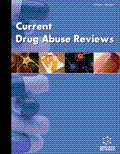Abstract
Pharmacological treatments are available for alcohol, nicotine, and opioid dependence, and several drugs for cannabis-related disorders are currently under investigation. On the other hand, psychostimulant abuse and dependence lacks pharmacological treatment. Mesolimbic dopaminergic neurons mediate the motivation to use drugs and drug-induced euphoria, and psychostimulants (cocaine, amphetamine, and methamphetamine) produce their effects in these neurons, which may be modulated by the opioid system. Salvinorin A is a κ-opioid receptor agonist extracted from Salvia divinorum, a hallucinogenic plant used in magico-ritual contexts by Mazateca Indians in México. Salvinorin A and its analogues have demonstrated anti-addiction effects in animal models using psychostimulants by attenuating dopamine release, sensitization, and other neurochemical and behavioral alterations associated with acute and prolonged administration of these drugs. The objective of the present article is to present an overview of the preclinical evidence suggesting anti-addictive effects of salvinorin A and its analogues.
Keywords: Hallucinogens, psychedelics, psychostimulants, Salvia divinorum, salvinorin A.
 34
34















